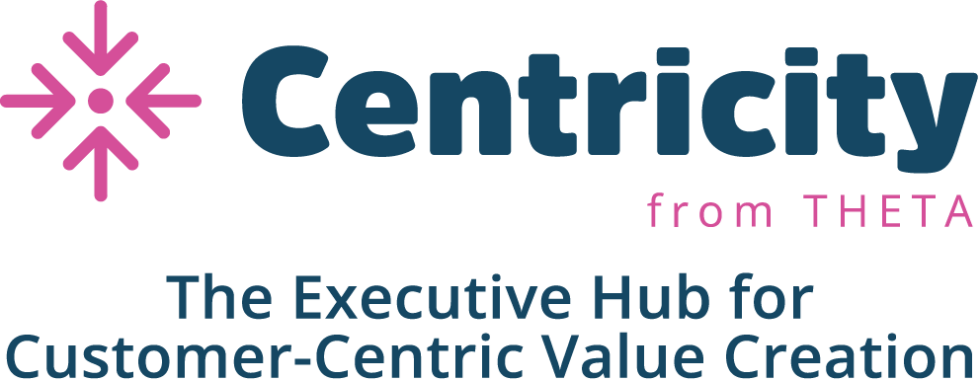Ecommerce Brands and Investors Must Adjust Three Core Practices to Navigate Capital Market Pressures and Position for the Best Valuation

Written by Tara Heptinstall, Theta | April 2023
Following its record-breaking performance in 2021, private equity posted its second-best year ever in 2022, according to Bain and Company’s recent Global Private Equity Report. That was despite an abrupt mid-year derailment of dealmaking, exits and fund-raising triggered by the Fed’s interest rate hikes in response to sharply higher inflation. Ecommerce played a significant role in those successes.
According to PitchBook, there were more than 14,000 ecommerce deals across 2021 and 2022, and ecommerce companies led all retail tech funding deals at $46B in that same period. Increasing adoption of technology and consumer’s growing comfort with online shopping ─ catalyzed by the pandemic ─ were key drivers.
Things are a bit different in 2023. Research on the pandemic’s long-term effects on consumption patterns suggest that customer behavior is starting to normalize, which is affecting the scrutiny of ecommerce companies as investments. Business valuations are also normalizing. Add in pressures from a slow supply chain, increased pricing, uncertain macroeconomic stability, and limited access to capital, and it’s understandable that investors are approaching ecommerce companies more cautiously than in the past couple of years.
Ecommerce businesses themselves also face some headwinds. This includes limited capital, shifting valuation expectations from investors, and changes in tech-sector privacy practices that have reduced the effectiveness of some of the mainstay digital marketing tools companies have relied on to drive customer acquisition. All of these pressure points will require ecommerce companies to approach value creation differently. There are three broad focus areas that can help them do that.
1. Take a Bottom-Up Focus on Unit Economics and Customer Acquisition
To realize their profitability potential, ecommerce brands may find greater success employing a bottom-up approach to evaluate their business ─ an approach many investors are beginning to recognize as a better way to find strong deals and create value. Rather than taking the traditional top-down view of the factors affecting revenue, a bottom-up approach focuses on the behaviors of customers whose purchases ultimately drive revenue. This can greatly benefit investors as valuation methodologies that focus on future consumer behavior have been shown to predict future revenue more accurately. For example, here at Theta, we use the Customer-Based Corporate Valuation® method that has proven to accurately predict future revenue within 5%.
A bottom-up approach entails optimizing critical unit economics, particularly reducing customer acquisition costs (CAC) and increasing customer lifetime value (CLV). Tracking these metrics correctly and accurately, and understanding the true costs to acquire customers relative to revenue generation is the kind of rigor investors are looking for when searching for the healthiest companies as potential acquisitions.
“A thoughtful study of a firm’s unit economics and the actual long-term value of the customer base can prove highly insightful for investors and management teams wanting to drive profitable growth,” said Daniel McCarthy, co-founder of Theta and co-creator of the CBCV® model.
“A thoughtful study of a firm’s unit economics and the actual long-term value of the customer base can prove highly insightful for investors and management teams wanting to drive profitable growth.”
Daniel McCarthy, co-founder of Theta and co-creator of the CBCV® model.
To improve their unit economics, ecommerce brands must also use a variety of tactics, such as improving marketing and advertising spend, enhancing customer experience, and investing in loyalty programs. By continuously monitoring and optimizing their performance from the bottom up and focusing on the most profitable customers, these companies can improve their financial profile to attract investors when capital is tough to come by.
This is good guidance for ecommerce founders and investors who may have pressed pause on their plans to exit until things are clearer at the macroeconomic level.
2. Target Marketing Investments on the Most Valuable Customer
Ecommerce companies also face the reality of digital marketing tools in their customer acquisition mix becoming less effective due to privacy changes among key tech giants such as Apple, Google and others. This could be particularly damaging for ecommerce brands that rely on targeted advertising to drive sales. But those that recognize that not all customers are the same and focus their efforts ─ and capital ─ on their most valuable customers have a greater chance of maximizing their marketing investments.
There are proven methodologies to get this information, such as the customer base analyses developed by Theta. Using the insights these methodologies generate to drive customer acquisition and development requires maximizing the mix of email, search engine, referral, and affiliate marketing programs along with other tactics to help rebalance the losses from less effective advertising on digital platforms like Facebook in the short-term. Knowing which channels drive the purchase behavior of the most valuable customers, and not being driven by the behavior of the ‘average’ customer, will drive greater profitability in the long run).
“Ecommerce brands that pull away during all this chaos will have customer data as a core part of their strategy and culture,” said Jake Cook, co-founder of Tadpull and guest lecturer at Harvard Business School. “Brands that can identify their most profitable customers and then build personalized and remarkable experiences through owned channels like email and SMS are well poised to provide consistent growth for investors.
3. Finetune Business Operations to Adjust to Fluctuations in Available Capital
Optimizing business operations to respond to fluctuating capital availability is yet another area to focus efforts that defensively buffer a company from risk and help it realize optimum value. Access to debt capital has been among the most critical pressures in early 2023 for both ecommerce businesses and investors.
Refinancing has also been challenging, especially for companies struggling to meet their budgeted results. With tighter money policies and harder-to-come-by capital, lenders are emphasizing results and more accurate forecasting, according to experts on the BDO Private Equity Perspectives Podcast. This is another opportunity for business leaders to use bottom-up analyses to tighten their forecasts and stay true to their value-creation promises.
Reducing operating expenses and revisiting strategic and economic assumptions are just two ways to stay prepared for a market rebound. Operationally oriented and data-driven leaders and investors who can roll up their sleeves and drive value will distinguish themselves.
When things start to improve, many great ecommerce companies could be coming to market and looking for the right capital partner. Investors are also looking for down market investment opportunities, searching for add-on acquisitions that look attractive as options for accretive value. Early-stage ecommerce companies who have standout technology, tight operations or recurring, profitable revenue models could emerge as prime targets for capital when things begin to turn around and investors are looking to create value through acquired bolt-on capabilities.
Conclusion
The challenges investors and ecommerce companies face in early 2023 will likely not subside the remainder of the year or even into 2024. Those organizations poised to overcome them ─ and flourish ─ are those that can see past them using different, better ways of creating and demonstrating value, as well as more accurately predicting future revenues.
